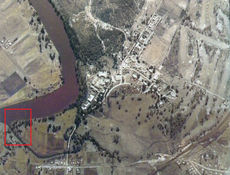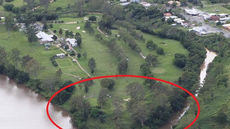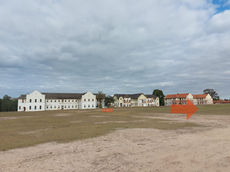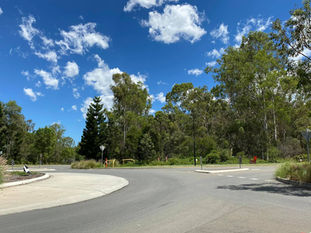

There Was Once an Asylum



This site not only provides an overview of mental health history and its implications for Goodna, but also explores the complex relationship between memory and history
There are stories we may never know, but this site uncovers the history, revealing the layers of understanding that form the foundation of the present.
It is done in a way that honours the patients, clients, and the people.
Cemetery Sites
“Many burials occurred at the institution from the 1890s to 1944. Between 1895 and 1912, more than 1500 patients died there and were presumably buried in a cemetery no 2 and possibly some no 3.
In addition, the remains of staff members and their families were interred in the cemetery. Between 1914 and 1940, approximately 4670 patients died – an average of 155 per year.
With perhaps few exceptions, all would have been buried in the hospital cemetery. A new plaque (post-2007) states that ‘approximately 200 bodies’ were transferred to Goodna Cemetery. The highest number on the grave markers is 2,300.”
From the Blake, ‘Wolston Park - Police Academy Cultural Heritage Survey.
Archaeological excavations at and in the vicinity of the three previous cemetery locations could elucidate the existence, character, and scope of interments. Coupled with the identification and examination of related artifacts and features, this research can provide insights into the treatment of the deceased patients and the burial customs at the hospital, the spatial organisation and layout of graves, as well as the scale and techniques of reburials.
"The asylum of the nineteenth century, and the mental hospital after it, were not intended to function as hospices for the dying or depots for the senile and abandoned aged. But in an era when there were few other options for residential care for the physically as well as mentally ill, the mental hospital was the final resting place for many...
" Finnane, Mark (2008) Wolston Park Hospital, 1865-2001:
Early articles relating to the complex
Cemetery Site 1 (Early Asylum Site 1865)
Historical records show that the Early Asylum Site included a cemetery situated near the confluence of the Brisbane River and Woogaroo Creek, positioned at the southern end of the site, with the river serving as an access point.
Site plans from around 1869 and 1878 reveal the establishment of a cemetery at the far western end, close to where Woogaroo Creek meets the Brisbane River.
The severe floods of February 1893 caused significant damage to the male quarters and submerged the main staff residences along with the original cemetery.
There is potential for archaeological findings at the original asylum cemetery site, which may contain interments, stone and metal grave markers and various artefacts and features related to the burial practices of the asylum.
During research, Mr James Clifford, who is mentioned on the "Caring" pag,e also certified burials at site 1
Cemetery Site 2 (1895-1912)
The second cemetery linked to the hospital is situated on the western flank of the Male Patients Area, presenting archaeological possibilities. Historically, it lay to the north of the main hospital structures and west of the cricket field.
The cemetery functioned from 1895 to 1912, after which it was shut down to facilitate the construction of two-story male wards, and burials were believed to have been moved to a third cemetery by 1913.
The site was later used for housing (1910s-c1958) and for kitchens and workshops (1970s), which have since been relocated or demolished. Possible archaeological remnants in this vicinity may include burials, reinterments, stone and metal grave markers, and various artefacts and features related to burial customs.
According to the heritage report between 1895 and 1912, more than 1500 patients died there and were presumably buried in cemetery no 2 and possibly some in no. 3
Cemetery Site 3 (c1913-1945)
The third cemetery associated with the hospital is situated immediately northeast of the Wacol Repatriation Pavilion Complex, presenting archaeological potential.
This area served as the hospital's cemetery from around 1913 to 1945, after which the burials were transferred to Goodna Cemetery. Originally cleared, the site now features regrowth bushland, flanked northwest by Wolston Park Road and a carpark, and southeast by Orford Drive, both roads elevated above the cemetery's ground level.
Possible archaeological remnants in this vicinity may include burials, reinterments, grave markers made of stone and metal, and various artefacts linked to burial customs. A few years ago, a bushfire went through the former site, and old headstones were still found amongst the burnt-out scrub
The Bottom Drawer Book Articles
By Lisa Joy





































